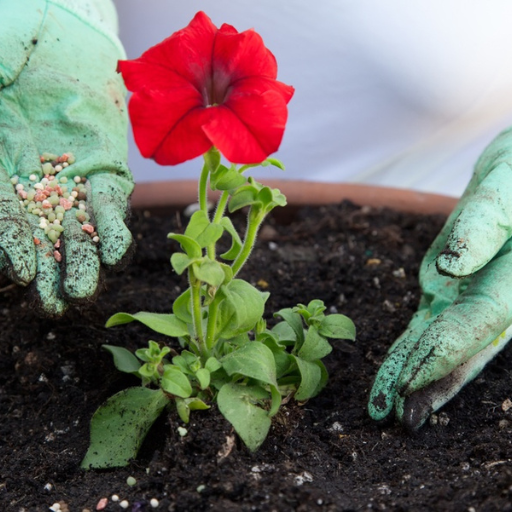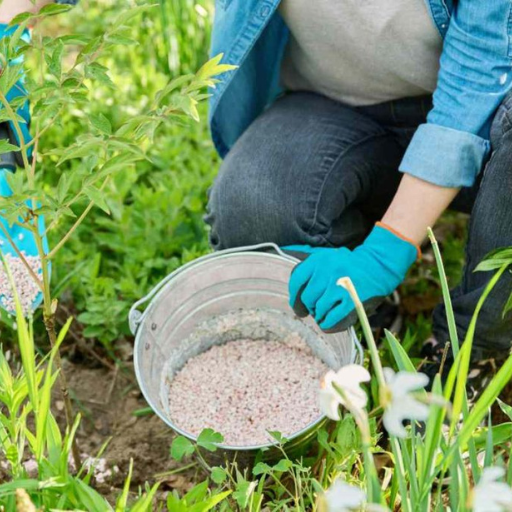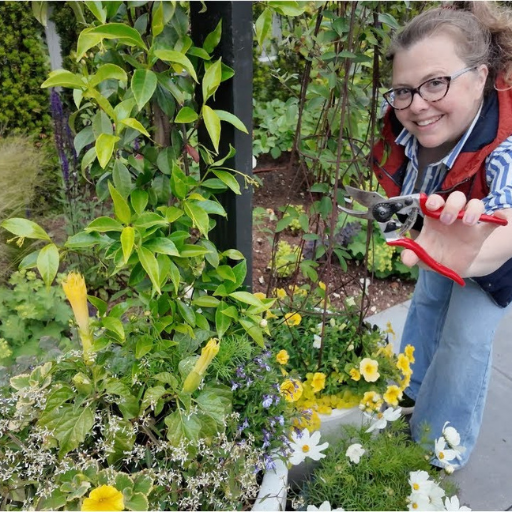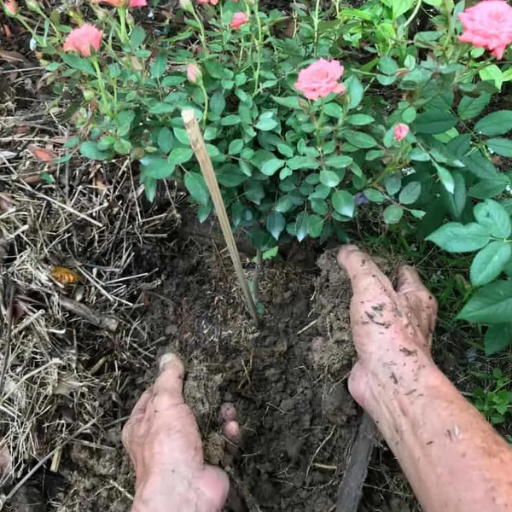Achieving a vibrant and flourishing flower garden often hinges on the quality of care and nutrition your plants receive. In this comprehensive guide, we will explore the myriad benefits of using Bloom Fertilizer Organic to transform your garden into a blooming paradise. From understanding the key ingredients that set this fertilizer apart from its synthetic counterparts to learning the best practices for application, this article will provide you with all the information you need to nurture your plants naturally and effectively. Whether you’re a seasoned gardener or a novice green thumb, our easy-to-follow tips and insights will help you maximize the beauty and health of your flower garden, ensuring a stunning and sustainable display year-round.
What is Organic Bloom Fertilizer?

Bloom Fertilizer Organic: The Basic Introduction
An organic bloom fertilizer is a plant food made from eco-friendly natural ingredients that are good for the growth of flowering plants. It is different from synthetic fertilizers that often entail chemicals; it rather depends on the breaking down of the organic things, such as compost and bone meal to naturally enrich the soil. This not only leads to colorful, vibrant blooms but also enriches the soil over time in terms of health and productivity. Bloom Fertilizer Organic encourages a balanced garden ecosystem where flowers can get all their nutrients sustainably to ensure healthy development and long-term resilience.
How Does Organic Bloom Fertilizer Work?
The working mechanism of an organic bloom fertilizer is based on its provisions of basic nutrients through natural means that help in plant growth as well as soil health. The decomposed organic matter like compost, bone meal and other similar materials once applied do break down slowly releasing continuous supply of nutrients like nitrogen, phosphorus and potassium among others. These are vital elements necessary for strong roots, beautiful blossoms and dense leaves respectively. Equally important is that these organic components enhance moisture retention by changing soil structure while providing support for useful microbes within it which lead to healthier garden ecosystems where plants can be sustained without fear of chemical build-up or soil degradation.
Essential Ingredients Found in Organic Bloom Fertilizers
Commonly, various natural ingredients provide essential nutrients responsible for nourishing blooming plants through organic bloom fertilizers according to most leading sources which include:
- Compost:this contains rich content of organic matter improving soil structure and water retention besides having slow release nutrition supply involving Nitrogen (N), Phosphorous (P), Potassium (K).
- Bone Meal:it provides excellent source calcium along with phosphorus which stimulates root development while enhancing flower production culminating into bigger and more vibrant blooms.
- Fish Emulsion:Being high in nitrogen and micronutrients this nutrient comes from fish waste hence boosting leaf growth and overall vigor of the plant. Fish emulsion also helps in improving soil fertility and microbial activity.
Therefore, these ingredients act together to make the soil richer, promote strong plant growth as well as enable sustainable gardening practices.
Why Should You Use Organic Bloom Fertilizer?
The merits of organic fertilizers
Using organic fertilizers have numerous advantages that make gardening and the environment healthy. Primarily, they improve soil health by incorporating organic matter that enhances soil structure, water retention and aeration. In addition, this creates better conditions for beneficial microorganisms and earthworms critical in the recycling of nutrients as well as maintaining fertility of soil. Besides, they provide a slow release of nutrients which ensures steady availability to plants over time without risk of nutrient burn common with synthetic fertilizers. Further, organic fertilizer are ecologically friendly thus reducing pollution from waterways and chemical runoffs. With their natural composition which does not allow harmful chemicals to accumulate on the soil makes them suitable for sustainable cultivation practices promoting plant health as well as biodiversity.
Organic v Synthetic Bloom Fertilizer Comparison
Several major differences can be seen when comparing organic versus synthetic bloom fertilizers. Organic fertilizers derived from natural sources improve soil structure, increase microbial activity and enhance nutrient cycling hence result in long-term benefits for soil health. Nutrients are slowly released hence ensuring constant supply to plants thus minimizing risk of nutrient burn. Organic fertilizers causes no environmental damages because it hardly pollutes or cause any sort of runoff into nearby streams.
On the other hand Synthetic ones are made from chemical compounds ready for immediate use so that they give your crops an instant food boost needed for them to grow quickly and produce flowers fast enough. Nevertheless they may lead to unbalanced nutrition or even spoilage of soils at last due to being based only on quick changes in plants’ requirements rather than their sustainable needs like their counterparts do in general sense of time frame under consideration herein.Soil degradation is one such problem that may arise out of this situation if these substances are used in excess.Their application could also mean more risks associated with waterway pollution and chemicals ended up accumulating inside soils when misused.Lessover, while they promise faster results, synthetic alternatives lack the long-term sustainability advantage of organic fertilizers.
Environmental Impact of Organic Bloom Fertilizers
Compared to synthetic bloom fertilizers, organic ones have a lower environmental impact. These fertilizers are sourced from natural elements hence they contribute to improved soil health and biodiversity. They also improve the structure of soil, increase water retention and help in nutrient cycling thereby supporting strong plant growth. Besides, organic bloom fertilizers release nutrients at a slow pace which minimized the chances of leaching into streams or other sources of water.
Additionally, with the application of organic fertilizers their use decreases reliance on chemical inputs that can be harmful to ecosystems and wildlife as well. By avoiding synthetic chemicals, organic fertilizer preserves beneficial microorganisms that reside within the soil. The sustainable practices associated with organic bloom fertilizes not only benefit immediate gardening environment but also give rise to long-term agricultural sustainability.
How to Apply Organic Bloom Fertilizer Effectively?

The Step-by-Step Application Guide
Soil Preparation:
- To start with, loosen the soil. Use a garden fork or rototiller to break up any clumps and improve air circulation and root growth by digging to about 6-8 inches in depth.
Determining the Right Amount:
- Depending on the plant type and its particular nutritional needs, calculate how much organic bloom fertilizer you should apply. This will be stated on the label of the product or consult manuals for gardening.
Applying the Fertilizer:
- Ensure that you spread it consistently all over the ground. Alternatively, you may sprinkle granular fertilizers manually or use a broadcast spreader; follow instructions when mixing liquids with water before applying them through cans or sprayers.
Incorporating the Fertilizer:
- Using a rake or hoe, carefully mix it into top few inches of soil; this helps its granules penetrate deeper and nutrients become available to roots.
Watering:
- It is advisable to soak them well after spreading your fertilizer to give them initial push down resulting in water getting into the soil. Sufficient moisture content hastens uptake for maximum plants’ healthiness.
Regular Monitoring:
- Regularly monitor growth of your plants as well as condition of soil. It should also be reapplied when necessary at least once every four to six weeks throughout growing periods as directed by producer’s instruction manual on packaging material.
This article shows that effective utilization of organic bloom fertilizers can help you improve your soil fertility levels thereby fostering healthy crop development even as we seek more sustainable approaches towards modern farming techniques.
Frequency and Amount of Application
How often and how much organic bloom fertilizer is applied depends upon a number of factors including plant species, soil type, and specific brand composition used. In general, every 4-6 weeks during growing season is recommended period for organic bloom fertilization. Most plants will need about two three pounds per 100 square feet using solid granules and liquid can be diluted as per the manufacturer instructions and applied weekly or twice per week. In order to avoid over-fertilization that may damage the plants, make sure you follow specific recommendations written on the label of any particular fertilizer. Therefore, it is important to monitor your soils fertility levels and observe how your plants react to various conditions so that this guide could be adjusted accordingly.
Best Practices for Different Flowering Plants
In order to boost growth and blooming in different flowering plants, it becomes imperative to have targeted best practices.
Roses:
- Soil Preparation: Well-drained loam mixed with organic matter should be used when growing roses.
- Watering: Water heavily but not every day, during hot weather ensure moisture remain in soil without being too wet (soggy).
- Pruning: These roses should be pruned once a year; removing diseased or dead wood would lead healthy growth and flowerings.
Hydrangeas:
- Soil pH: Acidic soil for blue flowers; alkaline one for pink colors.
- Sunlight: On this account they need morning sun only but shade in afternoons which prevents leaves from scorching.
- Fertilization: Feed them with balanced slow release fertilizer at the beginning of spring season before flowers appear.
Tulips:
- Planting Depth: Plant bulbs about 6-8 inches deep to protect them against frosting from severe cold temperatures outside.
- Watering: Water well immediately after planting bulbs and during dry spells as stated by agriculture experts’ advice.
- Fertilization: An application of time-release bulb food while leaves are emerging is done just before spring starts again next year as guidance given by gardening professionals suggests.
By following these specific practices for each type of flowering plant, gardeners can ensure optimal bloom and plant health. The best way forward therefore is to customize care routines according to specific species requirements leading into desired outcomes.
Can Organic Bloom Fertilizers Help with Vegetable and Fruit Plants?

Vegetable Growth Benefits
Several benefits accrue to fruit and vegetable plants by using organic bloom fertilizers. These fertilizers are enriched with essential nutrients like phosphorous and potassium which are mandatory for the development of flowers and fruits. The soil structure is enhanced by organic bloom fertilizers thus better microbial activity takes place; this improves nutrient uptake, health of plants. They also increase yields, improve taste as well as enhance resistance to pests and diseases hence becoming sustainable alternatives to chemical fertilizers. On the other hand, rich in organic matter, they promote water retention in soils and reduce incidences of root diseases thus enhancing the well-being and productivity of vegetables as well as fruits.
Efficient Fruit Production Boosting
There are several practices involved in efficient fruit production boosting. First ensure that your plants receive optimal sunlight because most fruit-bearing plants require at least 6-8 hours direct sunlight per day. Secondly, proper pruning of fruit trees encourages better air circulation and sunlight penetration which can improve the quality of fruits produced. Thirdly, consistent watering is required; on the other hand, shallow frequent watering is not appropriate for many kinds of fruit plants but deep infrequent watering is much preferred for these kind of fruits . Also another action is use organic bloom fertilizers which contain a lot phosphorus and potassium that helps robust flower formation during flowering season into good results on fruits forming. Mulching around the base reduces evaporation from soil surfaces, suppresses weeds growth while improving soil health too. Monitoring pests are diseases promptly should be done to prevent any hindrances to fruit production finally companion planting helps deter pests and increase pollination rates boosting this further again`By following these practices carefully gardeners can effectively maximize their yields.
Tips Specific To Fruits And Vegetables
Tomatoes
- Sunlight & Spacing: Tomatoes need at least 6-8 hours direct sunshine daily therefore planted seedlings should be separated by 18-24 inches spacing.
- Soil and Feeding: Use well drained soil that is exceptionally rich in nutrients, feed with a balanced fertilizer. Compost and manure are highly recommended.
- Watering: Keep the soil moist but never waterlogged by regular watering that goes deep into the ground making sure there is always some moisture in it.
Cucumbers
- Support and Training: Growing cucumbers on trellises provides support to the vines and increases air flow which helps reduce diseases.
- Watering Needs: Consistent watering during fruiting and avoiding wet leaves thereby preventing mildew formation.
- Fertilization: Nitrogen-rich fertilizer should be used at the early growth stages changing to a balanced one as soon as flowers appear on them.
Strawberries
- Planting and Positioning: Strawberries need well-drained soils with full access to at least 6 hours sunlight daily; elevate plants for good ventilation of air.
- Watering and Mulching: Water regularly at about 1-2 inches per week. Mulch around base of plants so as to conserve moisture suppressing weeds too.
- Pest Control: Always check for pests like slugs or beetles regularly; also put nets over berries to cover them from being eaten by birds or other animals like rats..
The above tips will help any gardener in achieving more produce from their gardens especially those growing common fruits and vegetables.
Common Problems and Solutions with Organic Bloom Fertilizers

What the problem with Over-Fertilization?
Over-fertilizing is a common problem that affects garden plants health in a big way. One sign of over-fertilization that I have observed is leaf burn or scorch, which causes brown and brittle edges of the leaves. This is because plant roots absorb too many nutrients which results in salt accumulation in the soil leading to root death. Also, plants that are over-fertilized often grow big and fast but have weak stems making them prone to pests and diseases. To deal with this, I suggest changing the fertilization schedule, washing through the soil using water abundantly to remove surplus nutrients, and switching to another fertilizer that is more balanced or organic if less concentrated nutrients are being used. In this way, we can be able to keep our gardens more sustainable while at the same time healthier.
Nutrient Deficiencies
From my experience, nutrient deficiencies can take on a variety of forms and affect plant performance across an entire garden. The three most common deficiencies are nitrogen, phosphorus, and potassium. Yellowing leaves along with stunted growth indicate lack of nitrogen in a plant. One solution for this condition could be introducing organic compost or fertilizers rich in nitrogen. Phosphorus deficiency usually manifests itself as dark greenish or purple leaves with poor flower set & fruiting abilities; you can use bone meal or rock phosphate as they act as good sources for phosphorous enrichment; whereas Potassium-deficiency symptoms may include yellowed/brown leaf margins accompanied by weak root systems; greensand addition or feeding on kelp meal may improve potassium levels significantly). These problems can be effectively and sustainably resolved once one closely monitors their plants’ growth patterns.
Soil Health And Microbe Management
For any thriving garden it is essential to maintain soil health and manage beneficial microbes. Healthy soils are teaming with diverse microorganisms such as bacteria, fungi and nematodes which play key roles in nutrient cycling and decomposition of organic matter. In order to nurture a healthy microbial community, my focus is always on adding organic materials such as compost and well-rotted manure, which serve as both food and shelter for these organisms. Equally important is avoiding excessive tillage because it destroys the soil structure thereby disrupting the microbe habitat. Moreover, I do not use synthetic chemicals that may upset the fragile balance of soil life but rather go for organic fertilizers and other means of pest control that support a sustainable thriving garden ecosystem. Such practices enable me to maintain my soil as a fertile, well-structured biological tapestry which results in healthier crops.
Frequently Asked Questions (FAQs)

Q: Define Bloom Fertilizer Organic?
A: Bloom Fertilizer Organic is one kind of garden plant food that is produced specially to help in flowers and fruits growth phase, this gives all the necessary nutrients contained in organic extracts necessary for strong plant development.
Q: What are the best ways to use Bloom Fertilizer Organic?
A: The best results can be achieved by blending Bloom Fertilizer Organic in recommended amounts with a gallon of water. This liquid feed can be used as a soil drench or applied through hose end sprayers so that your plants derive essential substances they need for healthy blossoms.
Q: How often should I apply Bloom Fertilizer Organic on my garden?
A: Quantity to give depends on the type of plants you have. Generally, applying every two weeks during blooming takes care of rapid growth and good blooms.
Q: Can I do foliar feeding with Bloom Fertilizer Organic?
A: Yes, indeed, foliar feeding can be done using Bloom Fertilizer Organic. Here this means spraying the diluted solution directly onto leaves where nutrients are absorbed effectively by plants.
Q: What distinguishes it from other fertilizers?
A: As it is made specifically for flowering and fruiting stages of life cycle, organic ingredients make Bloom Fertilizer Organic unique among other similar compounds. It contains vital secondary elements and promotes beneficial soil organisms making it suitable for home gardening.
Q: Can it assist with fruits and flowers?
A; Certainly, designed to encourage more fruitful and healthier flowers & fruits production; therefore bloom fertilizer organic does this function better.






